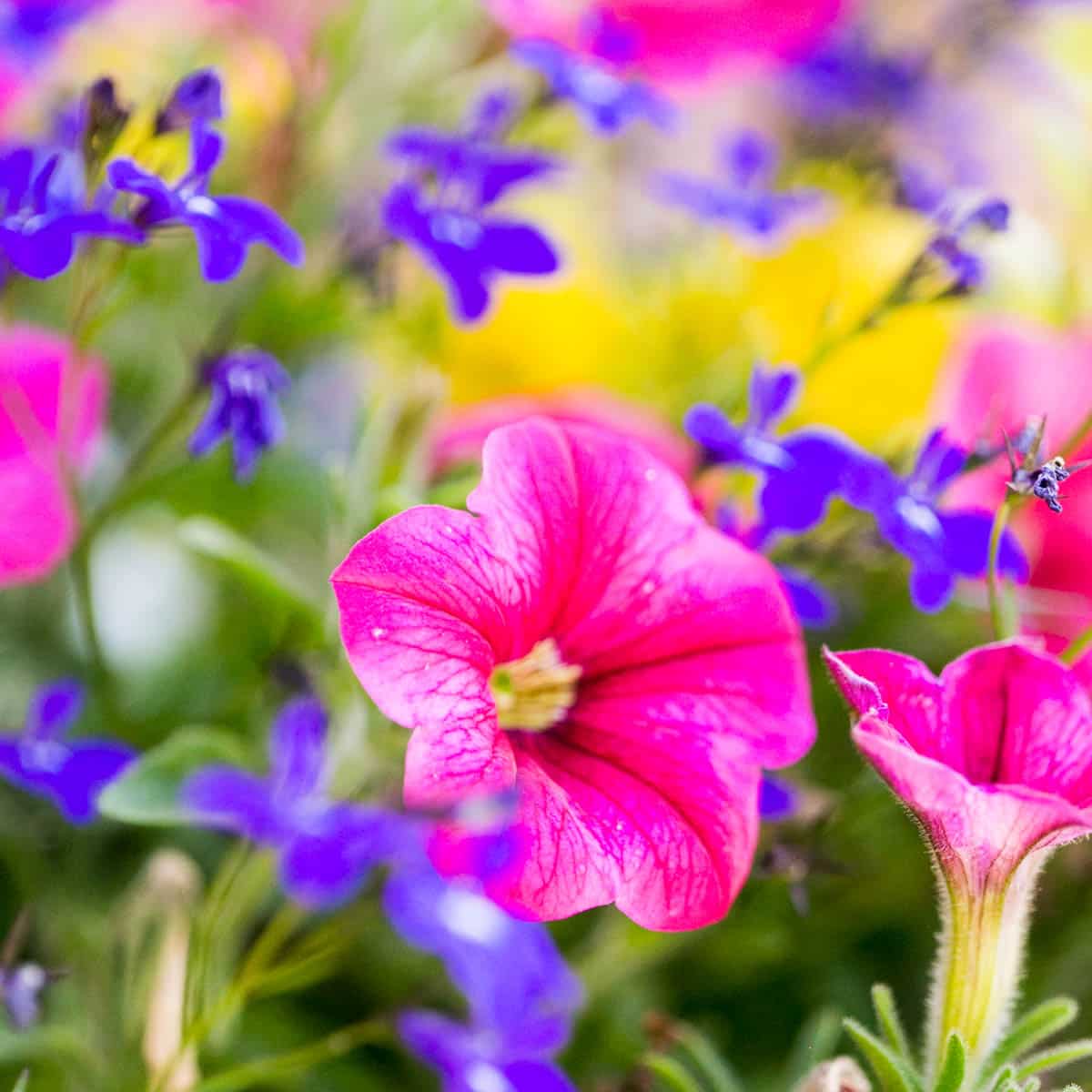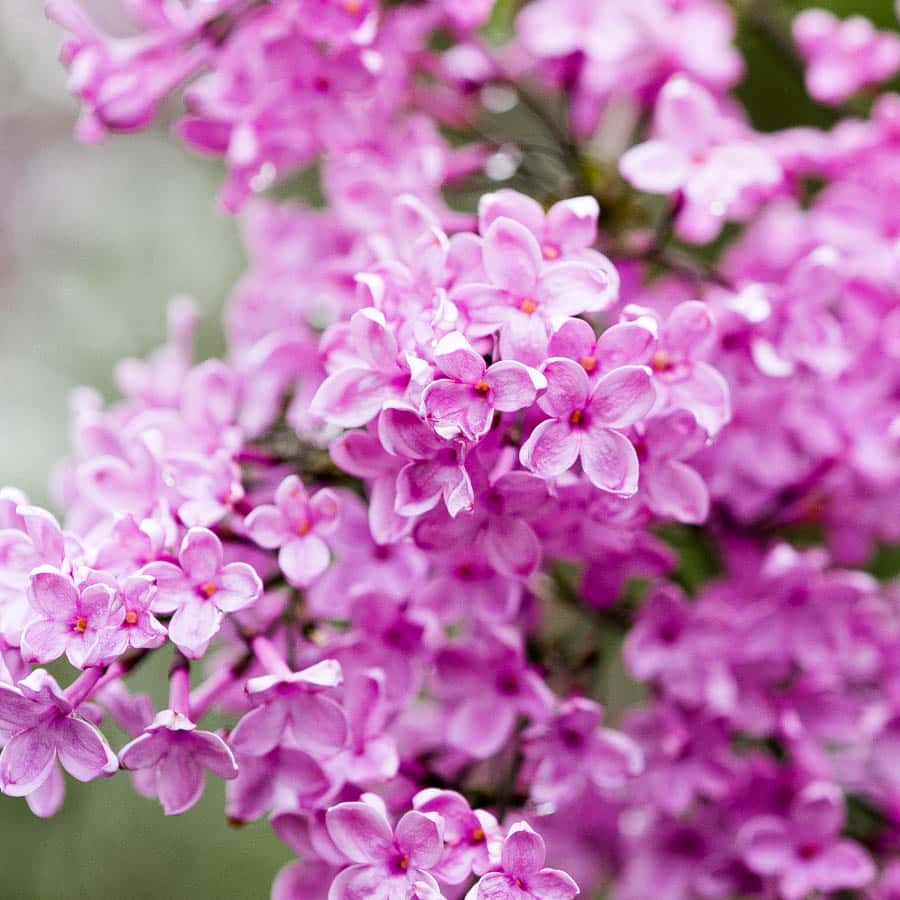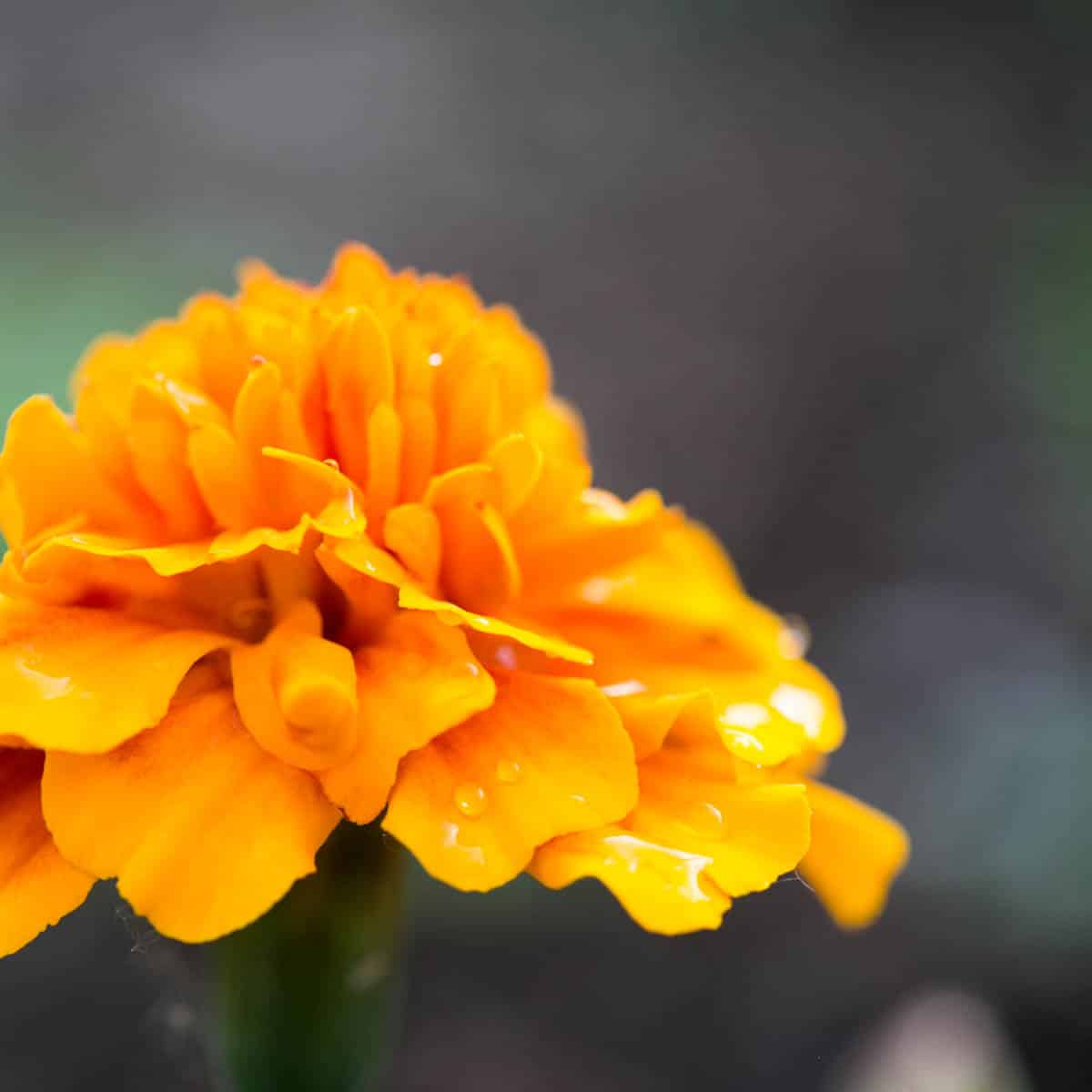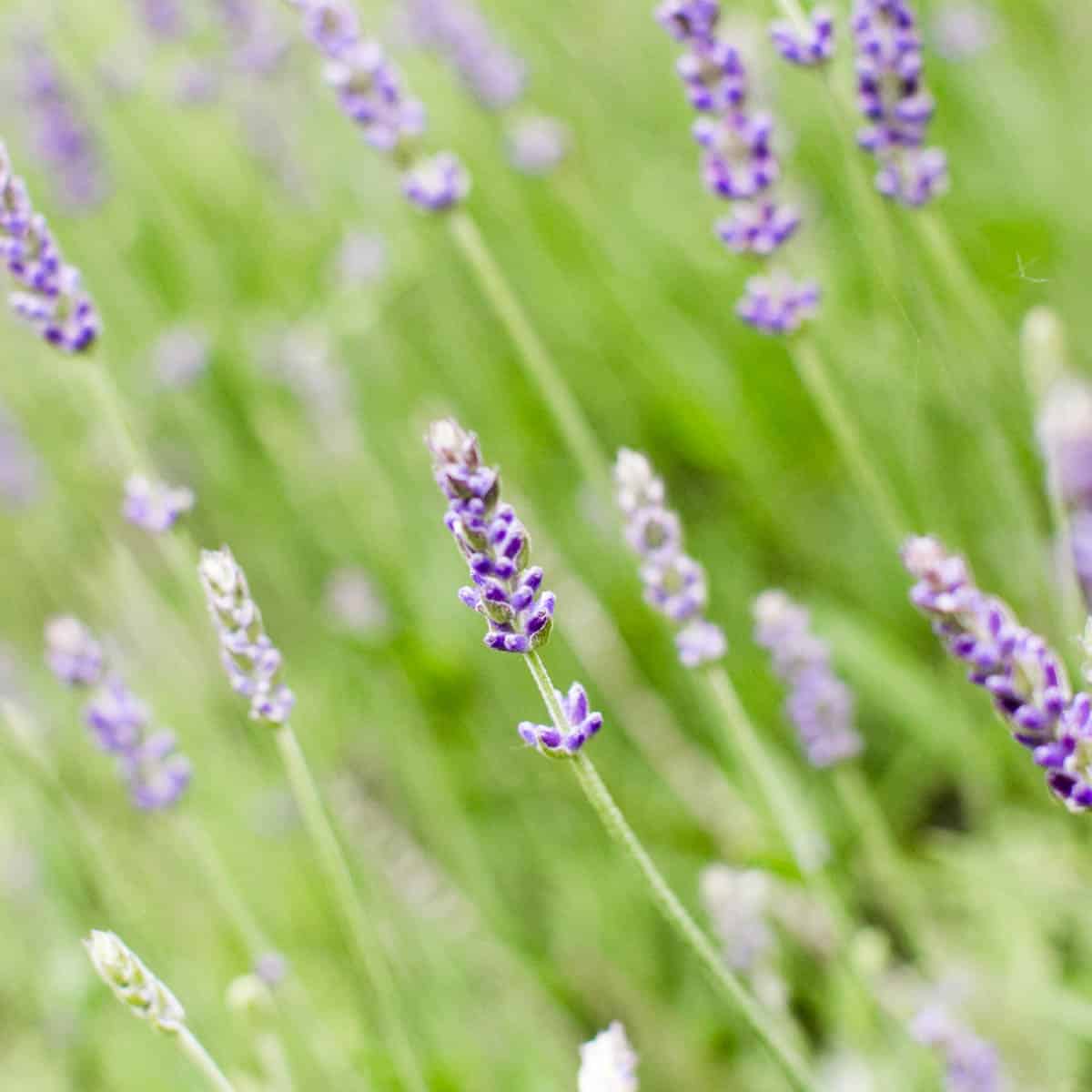How To Grow + Care For Peonies (Complete Guide)
Peonies are gorgeous perennials that add a bold splash of color to spring. After a decade of growing these delicious flowers, I’m excited to give you the best tips on how to grow and care for peony flowers.

With their stunning blooms and fragrant flowers, peonies are a beloved addition to any garden.
These lush perennials are famous for their large, showy blossoms, make great cut flowers, and when given the right care can live for decades.
About
Peonies are tender perennials that need cold winters to set their buds the following spring. They grow well in zones 2-8.
They are categorized in three groups: the commonly grown herbaceous peonies that bloom in spring and early summer, tree peonies– hardy woody shrubs that bloom in late spring, and Itoh peonies, a hybrid of the first two varieties that bloom in late spring to early summer with generous, oversized flowers.
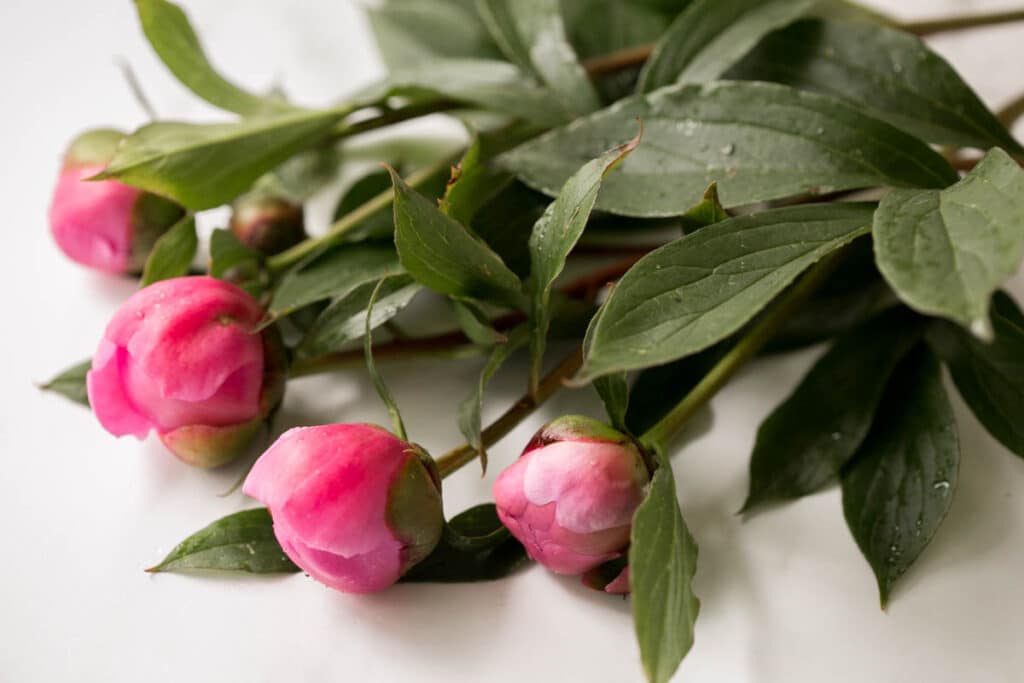
Peonies bloom with large petals in shades of yellow, coral, pink, red, white and purple! These gorgeous bloomers flower in mid to late spring, each bloom lasting about 7-10 days, depending on the weather.
I used blush-pink peony bouquets in my wedding eleven years ago, then my husband went on to plant multiple peony plants for us in the first home we lived in- we are huge fans and have spent years growing these lovely flowers!
Care
Though peony plants give impressive, oversized blooms, care is pretty simple. To thrive, these perennials need nutrient-rich soil, plenty of sun, and just enough moisture.
Let’s explore all of their care details here:
The Best Light For Peonies
Peonies love sunlight and thrive when given at least six hours every day. They need ample light to set their buds – if peonies are grown in lots of shade, they will not form flowers.
However, if you live in a hot growing zone, give them a bit of afternoon shade to protect them from intense heat that can damage the plant and cause wilting.
Details On Light:
- Duration: 6 to 8 hours of full sunlight daily. Morning sun is less intense than late afternoon light.
- Can tolerate light shade-dappled afternoon shade is perfect for peonies.
- Afternoon Protection: If you’re in a warmer climate, provide some afternoon shade to prevent leaf burn and wilting flowers.
Study the sunlight in your chosen planting area throughout the day. This will help you understand the light in your micro climate; some spots that seem sunny in the morning might get shady later on, for example.

Peonies in too much shade will not bloom well. Choose a sunny spot with a bit of shade if needed to keep them happy and blooming.
Soil
When you start growing peonies, one of the first things to consider is soil preparation. Peonies need well-drained, nutrient-rich soil for healthy root growth:
- Drainage: Peonies cannot tolerate soggy soil. Improve drainage in heavy clay soil by adding compost
- Nutrients: Use compost to enrich garden soil and provide the necessary nutrients for peonies
- pH Level: Aim for a neutral pH (6.5–7.0) to avoid growth problems. Test the soil’s pH and adjust as needed

Water
Established peonies need a deep drink of water every 10-14 days during the growing season. New plants need to be watered more frequently, every 5-7 days.
Increase watering if you are experiencing a hot, dry summer. Avoid over-watering your peony plant. The soil should be moist but well-draining (never soggy).
- Weekly Watering: Aim for 1 inch of water for new plants to encourage deep root growth.
- Soil Check: Before watering, feel the soil. If dry up to the second knuckle, it’s time to water.
- Morning Watering: Water in the morning to give the soil time to soak up moisture before it gets hot outside.
- Gently apply water at the base of the plant to avoid getting the foliage wet.

Important watering note: Every climate is different; some are very dry while some environments are full of moisture – so you’ll want to adjust the watering schedule based on the zone you live in. Watch the soil and find the right balance to avoid root rot.
Fertilizer
The right fertilizer can help develop strong root growth and large, showy flowers.
Fertilizing peonies each year is effective when done in two stages. First, apply fertilizer before the leafy shoots start growing in early spring.

Then, use another round right after the flowering season ends. You can do the first application anytime from autumn to early spring.
Types of fertilizer for peonies:
- Compost: Provides slow-release nutrients that enhance the soil
- Balanced Fertilizer: Use 10-10-10 for equal nitrogen, phosphorus, and potassium.
- Low Nitrogen, High Phosphorous Fertilizer: A 10-20-20 will encourage a greater bloom production without an overgrowth of foliage
Spread fertilizer in a ring around the peony, 6–12 inches from the base. Avoid putting fertilizer on the crown or on young shoots.
Fertilize once in the spring, feeding with a top layer of compost after blooming in the spring.
When given nutrient-dense soil, peonies do not need a lot of extra fertilizer.

Where To Plant Peonies
These herbaceous perennials thrive in areas with plenty of sun as well as shelter from strong winds. Choose a spot with well-draining soil and at least six hours of sunlight daily for the best results.
Peonies can tolerate partial shade but produce more blooms in full sun.
Space peonies at least 4 feet apart to promote good air circulation, which helps prevent fungal diseases.
How To Plant
When planting container-grown peonies, dig a planting hole deep enough to accommodate the peony roots, typically around two feet deep, and amend the soil with organic matter and bone meal.
Place the crown of the plant near ground level to prevent rot. Place the roots at the base of the hole, covering them with a few inches of soil.
Water the newly planted peony thoroughly, and mulch the soil surface with pine needles or straw to retain moisture and suppress weeds.
Plant bare-root peonies in a hole that’s about 3 inches deep, and make sure the eyes of the root are facing upwards.
My husband planted 7 or 8 new peonies by root at one of our homes during our first autumn. The first year of flowers was a bit disappointing, but within a few seasons our peonies had gorgeous foliage and were full of flowers. Be patient with your new plants; good things are coming.
When To Plant
Bare root peonies are best planted in early fall, while potted plants that have been growing in a nursery can be planted in fall or early spring.
Whether you go with bare-root plants or a potted peony, avoid planting during times of frost. Young plants need to establish their roots before dealing with frigid cold!
When + How To Harvest Peony Blooms
Peonies make excellent cut flowers and are easy to harvest and enjoy! The best time to cut peony blooms for your indoor display is early morning before the day’s heat affects the flower bud.
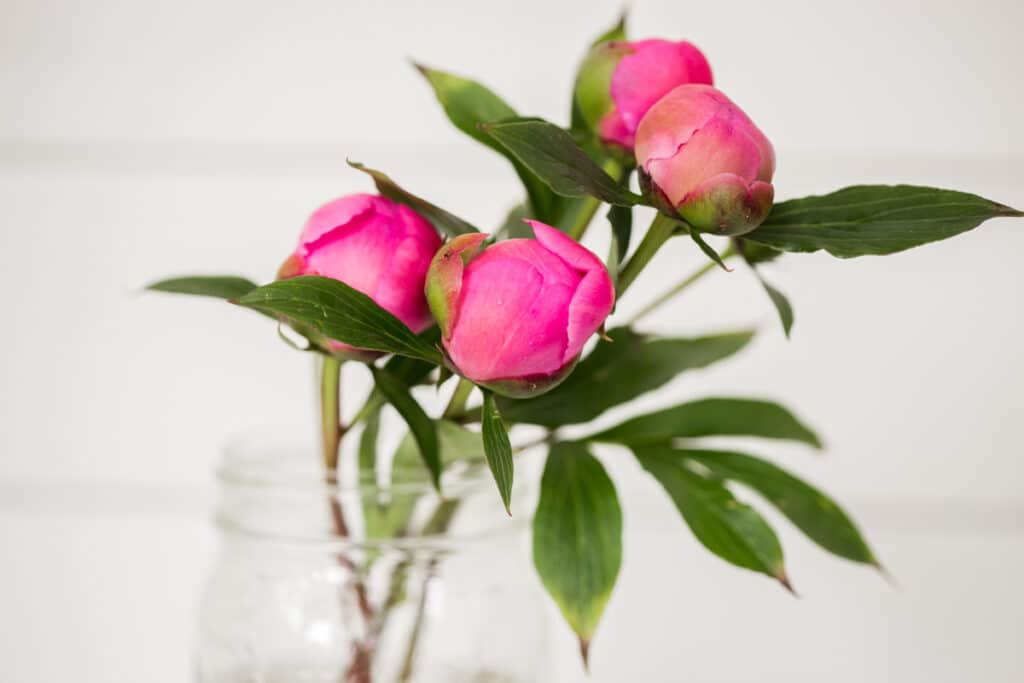
Harvest when the buds remain slightly closed and feel squishy like marshmallows. Get more info on how to cut peonies for a long lasting arrangement here.
Peonies are filled with fragrance and beauty; as their leaves unfurl, your home will smell like a spring garden!
Deadheading
Though deadheading does not increase flower production, removing spent flowers from peonies is crucial for their overall health and appearance.
Removing old blooms allows the plant to put its energy into its roots instead of seed production. For tips on deadheading your peonies, check out our peony pruning guide.

Common Problems
When given ideal growing conditions peonies will thrive. But even under the best circumstance problems may arise that might affect your peonies’ health.
It’s important to spot these issues early so you can fix them before they effect the entire plant.
Ants On Peonies
You might see ants hanging around peony buds because they’re attracted to the sweet nectar. Though they can be a nuisance, ants on peonies will not hurt your plant. Learn more about ants on peonies here.

Powdery Mildew
Powdery mildew is a fungal disease that makes white powder on top of the leaf. To prevent powdery mildew, give your plants plenty of space for air circulation and avoid over-watering.
Buds Turning Black
Black buds can occur because of cold, wet weather in the spring that harms the new growth. Lack of sunlight can also contribute to this problem. Give your plants plenty of sunlight and air circulation to prevent this problem.
At one of our homes peonies had been planted in almost full shade. Few buds formed, and the ones that did turned black. I ended up transplanting these to a sunnier location.
Botrytis
Botrytis, also known as gray mold, is common with peonies. It causes the wilting and blackening of stems and buds, especially in damp, cool weather.
To treat, spray the plants with a fungicide when young tips emerge from the ground. Proper spacing to promote airflow will help prevent this unsightly disease.
Get Ready for Beautiful Blooms
When given rich, well-draining soil and plenty of sunlight, peonies will light up the spring garden with dazzling blooms.
These long-lived perennials are surprisingly low-maintenance once established. They are truly the crown jewel of spring.
I hope this guide helps you grow gorgeous peonies flowers for decades!

